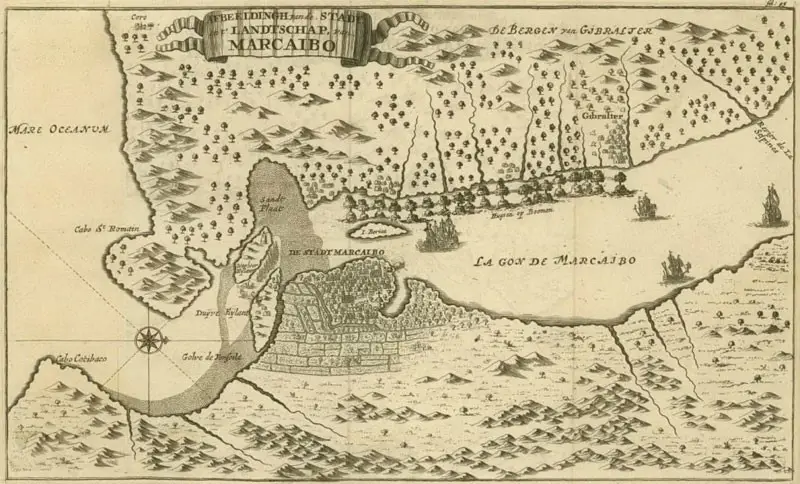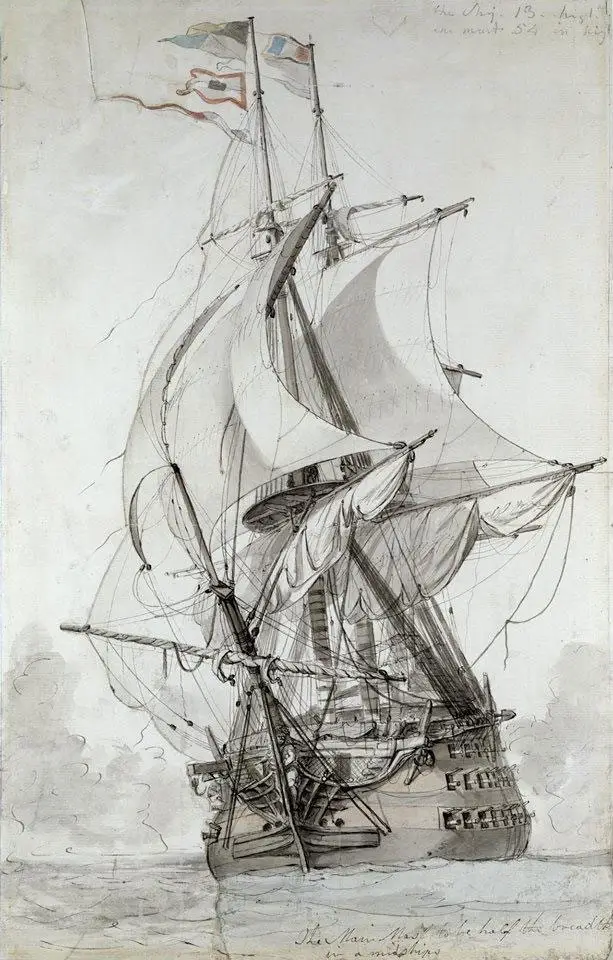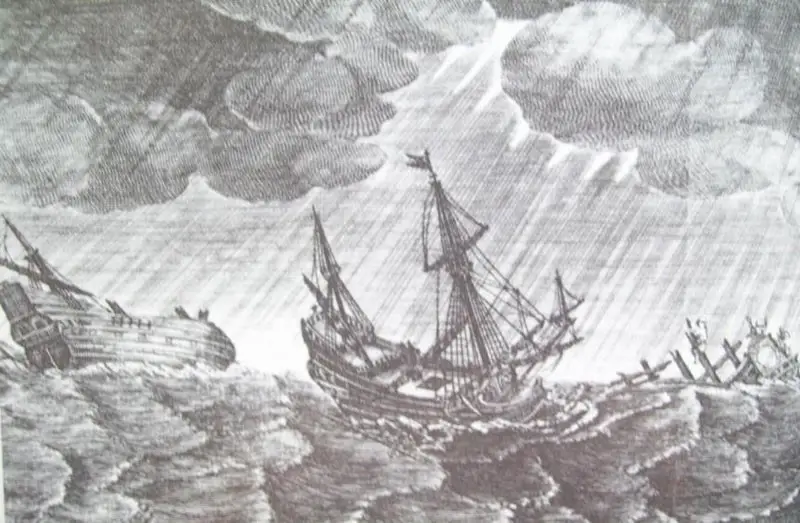Campaigns on the Spanish possessions of Captain Grammont

One of the most famous pirate leaders in the Caribbean in the 1680s was the Frenchman Captain Grammont. In addition to his excellent knowledge of maritime affairs, he also had rare luck: he captured large cities, where he took large trophies, while remaining elusive to the Spaniards.
Carier start
Little remains of Captain Grammont's early life. Even his name is not known exactly: in some sources he is Michel, in others - Henri, in others - Jean. The latter option is more likely. He was born around 1640 in Paris in the family of a Guards officer. Grammon's father died early, his mother remarried.
When Grammont was a teenager, a certain officer began to court his sister. The girl reacted favorably to his intentions, but her brother was against it and once did not let the officer into the house. There was a quarrel that ended in a duel. In a fair fight, young Grammon inflicted a mortal wound on the officer. Then the incredible happened: the dying officer made a will, where it was said that he did not blame the young man for his death and, in addition, bequeathed part of his property to his sister.
About this stories King Louis XIV himself soon found out and ordered Grammon to be enrolled in the Naval School.
After graduating from college, he becomes a naval officer and serves on the royal navy. In 1675, Grammont was entrusted with command of a ship for the first time. At this time, the French fought a long war with Holland. Grammont goes to the West Indies and captures a Dutch merchant fleet near the island of Martinique.
The total production was estimated at 400 thousand livres, of which 80 thousand were the captain's share. The amount was considerable, but Grammon managed to squander all the money in a week, spending it on entertainment and treating hundreds of people. Thus left without money, he joined the local filibusters in the French colony of Saint-Domingue.

Grammon during the boarding battle. Fragment of an ancient engraving
In February 1678, the governor assembled a flotilla of corsair ships for a trip to the Dutch island of Curosao. One of the ships was commanded by Grammon. Soon they were joined by the royal squadron, and the size of the expedition reached 30 ships.
However, near the Aves Islands, 13 ships hit reefs and were wrecked, more than 500 sailors died. Grammon took command of 8 ships, carrying up to 700 people, and separated from the fleet, heading for the Spanish city of Maracaibo.
On June 10, the corsairs reached the city. After heavy artillery shelling, the fort covering Maracaibo surrendered, and all the inhabitants fled from the city itself. The empty city was occupied and plundered.
In a report to the governor, Grammont wrote about the capture of this city:
On the same day, a judge arrived in the city under a white flag to talk to me about ransoming the city. I gave him eight days to do this, and during this period he was to supply me with twenty-five bulls daily. That same day, Father Simon sent me a message that six Flemish frigates and two fire ships had joined forces with the Spaniards to wait for me behind the sandbar and not allow me to leave.
On the 7th I sent two ships to Gibraltar with orders to one of the captains to negotiate an agreement regarding the city or, failing that, to burn it. On the 14th... I agreed to a ransom for the city of 6 piastres and 000 head of cattle.
On the 16th, ships arrived from Gibraltar, which burned the city and all the plantations located on the coast of the lake as far as Maracaibo."
Grammont also carried out raids on the neighboring cities of Gibraltar and Trujillo. The total production of Grammon's team was estimated at 150 thousand piastres.
Since the campaign was successful, the colonial authorities offered Grammon the rank of captain 2nd rank in the Royal Navy, but for some reason he refused.

Map of the Gulf of Venezuela and Lake Maracaibo, 17th century
Hiking La Guaira and Veracruz
The next campaign began in May 1680. Grammon's team appeared off the coast of Venezuela and attacked the city of La Guaira. Although the city was taken without much difficulty, the booty of the corsairs was insignificant, except for 150 prisoners.
Meanwhile, Spanish troops soon appeared, reinforced by Indians. In the ensuing battle, Grammon was seriously wounded in the throat by an Indian arrow, but the Spanish attack was repulsed. The French freely boarded ships with all the booty and sailed away.

For the next two years, Grammon did not take part in campaigns, apparently treating a wound that had not healed for a long time. In February 1683, he joined as first mate the Dutch captain Nicholas van Hoorn, who assembled a large squadron for a campaign against the Spanish city of Veracruz.
Having landed unnoticed a few kilometers from the city, at dawn on May 18, the pirates took Veracruz by storm, taking its garrison by surprise. Next, they herded all the residents into the cathedral, surrounded it with barrels of gunpowder and threatened to blow it up if the townspeople did not collect the ransom within the appointed time. In three days they completely plundered the city.
When Spanish ships were spotted on the horizon on May 22, the pirates reduced the ransom amount and, along with all the loot and prisoners, left the city.
Their total booty in Veracruz amounted to 1,5 million piastres, which was one of the largest pirate trophies of the era.
Although the Spanish flotilla consisted of 17 ships, it nevertheless did not dare to engage in battle with the pirates, as a result of which they left unhindered.

French ship of the 17th century
Hike to Campeche
Grammon carried out his next major campaign in 1685 against the city of Campeche, in what is now Mexico. His crew of 900 pirates disembarked and landed in 22 boats near the heavily fortified city. Part of the Spanish garrison went beyond the fortifications and attacked the pirates, but unsuccessfully.
Soon the Spaniards fled, and on their shoulders the French burst into the city. The fighting continued on the city streets, where the soldiers and residents of Campeche deployed their guns and took the fight.
However, it was not possible to stop the pirates in street battles. Grammont's sharp shooters soon killed the artillerymen and captured 40 cannons, which they immediately turned towards the city's defenders. After several volleys, they began to surrender. So the poorly armed pirates took a well-fortified city with a strong garrison in a few hours.

Campeche in a 17th-century engraving
All that remained was to take the fort next to the city, in which a garrison of 400 people had taken refuge. Grammont ordered the artillery bombardment to begin. The bombardment of the fort continued for 9 hours, but it was not possible to destroy it. Then Grammon decided to prepare for the assault the next day. However, it never took place: at night the Spaniards fled from the fort, the pirates took it without a fight.
Since Grammon's booty in Campeche turned out to be modest, he sent a letter to the Spanish governor, where he offered to release all the soldiers, officers, officials and residents of the city who were in his captivity in exchange for a ransom. Otherwise, he threatened to kill everyone and burn the city. However, the governor did not make a deal and wrote in his response letter:
Realizing that the governor would not pay, Grammont executed five prisoners. But, seeing that the governor did not care about them, like the rest of the townspeople, he abandoned the idea of killing everyone and burning the city. Instead, he only destroyed the fort's fortifications, after which the pirates left Campeche and returned to their base in San Domingo.

Shipwreck. 17th century engraving
Grammont had many more plans. In the spring of 1686, he attempted to capture the city of San Augustin in Florida, but failed; the forces were not enough to take the city.
In October of the same year, in the area of the Azores, Grammont's ship Le Hardy, along with 180 crew members on board, went missing. Apparently, it sank during a strong storm that raged in those places for three days. Neither the wreckage of the ship nor the bodies of the crew members were ever found.
Information